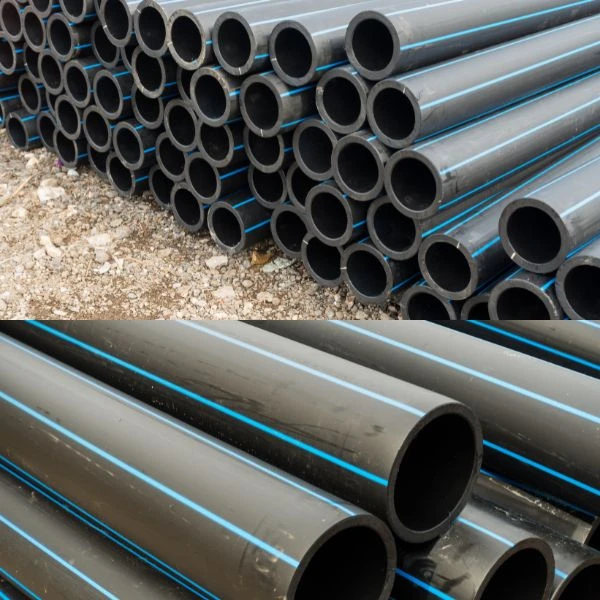
Introduction
This article explores the features, benefits, and installation of the PE Pipe Saddle, highlighting its role in enhancing the performance and longevity of PE pipe systems.
What is the Hawle Haku PE Pipe Saddle?
Definition and Purpose
The Hawle Haku PE Pipe Saddle is a specialized fitting designed to facilitate connections to polyethylene pipes. Its primary purpose is to provide a secure and leak-proof method for tapping into or branching off a PE pipe system. Key features include:
- Compatibility: Designed to fit a range of PE pipe sizes.
- Durability: Constructed from high-quality materials for long-lasting performance.
- Ease of Installation: Simplifies the process of creating service connections or branches.
Applications
The Hawle Haku Pipe Sizes: Compatible with a range of DIN 8074 diameters, offering flexibility in different projects.
Saddle is used in various applications, including:
- Water Distribution Systems: For connecting service lines or adding branches to existing systems.
- Irrigation Systems: To facilitate the installation of additional components or lines.
- Industrial Applications: For creating custom branch connections in industrial piping systems.
Features of the Hawle Haku PE Pipe Saddle
1. Robust Construction
- Material: Made from high-strength materials that resist corrosion and wear, ensuring durability in various environmental conditions.
- Design: Engineered to withstand high pressure and harsh conditions, making it suitable for demanding applications.
2. Versatility
- Pipe Sizes: Compatible with a range of DIN 8074 diameters, offering flexibility in different projects.
- Connection Types: Suitable for various types of connections, including service taps and branch lines.
3. Easy Installation
- Installation Process: Designed for straightforward installation with minimal tools required.
- No Special Skills Needed: Can be installed by personnel with basic training, reducing labor costs.
Installation of the Hawle Haku PE Pipe Saddle
1. Preparation
Site Assessment
- Survey: Conduct a thorough survey of the installation area to identify the optimal location for the saddle.
- Pipe Inspection: Check the condition of the PE pipe to ensure it is suitable for saddle installation.
Pipe Preparation
- Cleaning: Clean the area where the saddle will be installed to ensure a secure fit.
- Marking: Mark the pipe where the saddle will be placed, ensuring accurate alignment.
2. Installing the Saddle
Procedure
- Positioning: Place the saddle over the marked area on the DIN 8074.
- Securing: Tighten the saddle to the pipe using the provided bolts or clamps, ensuring a secure and leak-proof connection.
- Checking Alignment: Verify that the saddle is correctly aligned and properly seated.
Testing
- Pressure Test: Conduct a pressure test to check for leaks and ensure the integrity of the connection.
- Inspection: Inspect the installation for any signs of misalignment or damage.
3. Final Steps
- Backfilling: If applicable, backfill the area around the saddle, ensuring proper compaction and support.
- Documentation: Record the installation details for future reference and maintenance.
Benefits of Using Hawle Haku PE Pipe Saddles
1. Reliability
- Leak-Proof: Provides a reliable, leak-proof connection, essential for maintaining system integrity.
- Durable: High-quality materials and construction ensure long-term performance.
2. Efficiency
- Quick Installation: Simplifies the process of creating branch connections, reducing installation time.
- Reduced Labor Costs: Easier installation translates to lower labor costs and fewer specialized tools required.
3. Flexibility
- Adaptability: Suitable for various pipe sizes and connection types, making it a versatile choice for different applications.
- Customizable: Allows for the creation of custom connections and branch lines as needed.
Maintenance and Care
1. Regular Inspections
- Visual Checks: Regularly inspect the saddle and connections for signs of wear, leaks, or damage.
- Pressure Monitoring: Monitor system pressure to detect any issues related to the saddle or connections.
2. Cleaning
- Debris Removal: Keep the area around the saddle clean and free from debris that could impact its performance.
- Avoid Harsh Chemicals: Use appropriate cleaning methods to avoid damaging the saddle or pipe.
3. Repairs
- Minor Issues: Address minor leaks or issues promptly to prevent escalation.
- Professional Assistance: Consult with a professional for significant repairs or replacements.
Conclusion
The Hawle Haku DIN 8074 Saddle is a valuable component for managing and expanding PE piping systems. Its robust construction, ease of installation, and reliability make it an excellent choice for various applications, from water distribution to industrial processes.
FAQs
1. What types of PE pipes are compatible with the Hawle Haku PE Pipe Saddle?
The saddle is designed to be compatible with a range of DIN 8074 sizes and types. Check the product specifications to ensure compatibility with your specific pipes.
Proper installation and tightening of the saddle are crucial for a leak-proof connection. Conduct a pressure test after installation to verify that the connection is secure.
4. What maintenance is required for the Hawle Haku PE Pipe Saddle?
Regular inspections, cleaning, and monitoring of system pressure are recommended to ensure the saddle’s performance and address any potential issues promptly.